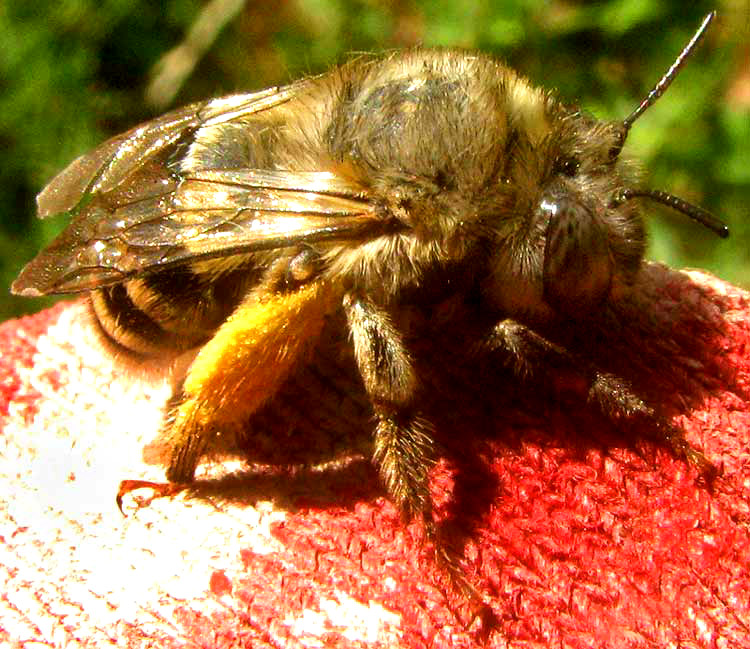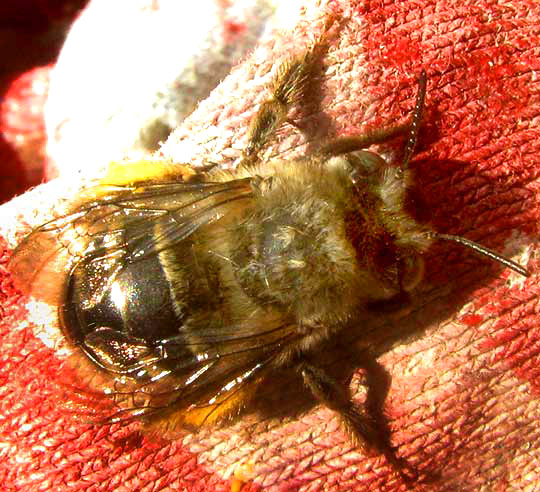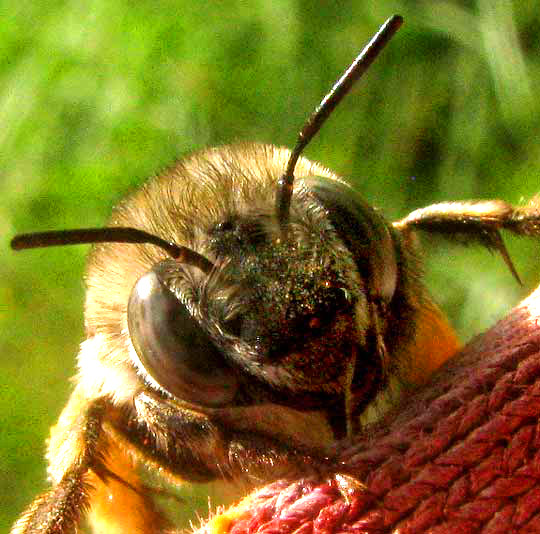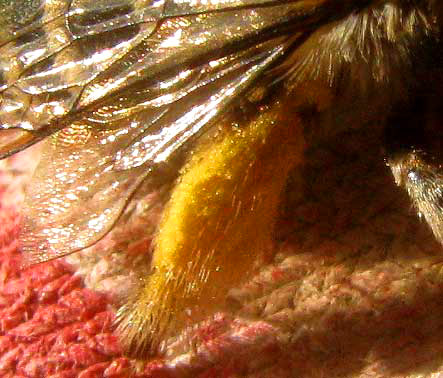Excerpts from Jim Conrad's
Naturalist Newsletter

from the July 13, 2014 Newsletter issued from the Frio Canyon Nature Education Center in the valley of the Dry Frio River in northern Uvalde County, southwestern Texas, on the southern border of the Edwards Plateau; elevation ~1750m (~5750 ft); N29.62°, W99.86°; USA
CHIMNEY BEE
The screened-in veranda of the house I was painting had its doors off, so insects flew in, then for hours bumped against the screens trying to get out. Mostly it was moths but also some bees, who often turned up dead at the screens' bases, apparently having run out energy. One bee was still alive, however, and when I looked closely I realized the body was too short and stubby for a regular honeybee native to Eurasia. Also, pollen on the back leg was carried differently from how honeybees do it. This was a native American bee, which, above, you can see on a rag used to clean up red paint I'd made a mess with. A shot with a top view of the bee is seen below.

A close-up emphasizing the short antenna and mottled eyes surrounded by dense hairiness appears below:

And a close-up showing how pollen is carried on the back leg appears below:

With help from Dr. John Ascher, an entomologist at the National University of Singapore and Associate with the American Museum of Natural History, corresponding via BugGuide.Net, our bee has been identified as a member of the genus ANTHOPHORA, known as Chimney or Miner Bees. In our part of the country the most commons Anthophora species by far seems to Anthophora abrupta, so I'm guessing that that's what we have, though I can't be sure.
*UPDATE: In 2025, with many more identification resources available on the Internet, and having uploaded this page's pictures to iNaturalist, user "johnascher" in Singapore and an expert on bees, recognized ANTHOPHORA URBANA, the Urbane Digger Bee, of western North America south to southern Mexico. My A. abrupta occurs in the eastern US, apparently not reaching this far west.
In this part of southwestern Texas we have two Anthopora species: A. californica and A. urbana. The main visual feature separating these two species is that the bands of hairs on the abdomen of A. californica tend to be white, while those of A. urbana are more pale yellowish-dingy.
I find little life history about the species other than it visits many kind of flower. Also that nearly all species of Anthophora make nests in the soil, either in banks or in flat ground, with the larvae developing in cells with waterproof linings, and they don't spin cocoons.